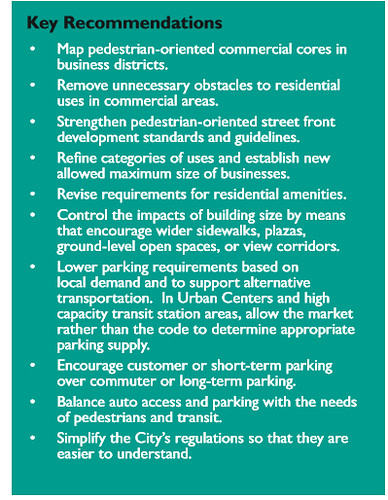Another short point about new infill development of housing in transit corridors: you need to make the zoning changes long before the line opens + you may need to create implementation mechanisms too
I laughed when looking at an article, "One year ago, L.A. approved an ambitious housing plan. What’s happened since? Nothing," the Los Angeles Times making the point that in the year since the city approved higher density infill development in the Expo transit line "catchment zone", there has not been any new development, and no permits have been issued.
One year ago this week, Los Angeles took what appeared to be a significant step towards combating its housing affordability crisis. By a unanimous vote, the L.A. City Council approved the Expo Corridor Transit Neighborhood Plan, a set of updates to the city’s zoning code that would make it legal to build mid-rise apartments and mixed-use retail near five Westside Expo Line stations, including — boldly — some areas currently limited to single-familyEven in strong markets, it takes a long time to develop projects. One year is nothing.
In changed situations, you have to have property owners and developers willing to take on projects, who understand it. Building that capacity takes a long time. Plus, a number of the developers willing to take on such work, at least initially, may do very bad work.
Many years ago, real estate developer and educator Christopher Leinberger wrote about "the predominate product types" in real estate development, and how "these products" were often out of sorts compared to the kind of development that city centers were seeking.
-- "Creating Alternatives to the Standard Real Estate Types (The Need for Alternatives to the Nineteen Standard Real Estate Product Types)," Places Journal, 17:2 (2005)
(Note that this is out-of-date given the 2008 Great Financial Crisis, and other changes in development conditions since.)
It takes a long time to build "a product-service system" that will produce the kind of outcomes you want in the best of times.
In changing circumstances, it takes even longer.
And often you need to lead the change through subsidy, helping initial projects develop on a pilot basis, to demonstrate to others the possibilities, etc.
This is about change management.
And change takes a long time.
Granted these are multi-unit developments, but I can think of a three projects on H Street NE that took/are taking 10-15 years ("360 Apartment building + Giant Supermarket vs. a BP gas station, which would you choose?"), and a project at the Metrorail station in Takoma DC is going on 20 years, with no ground breaking in sight.
FWIW, attending the National Main Street conference in Seattle in 2007, I was "blown away" by a presentation by the City of Seattle Planning Department about their program of rezoning around commercial districts that would be served with the coming of light rail to Seattle (Neighborhood Business District Strategy, September 2004)
And this was 5-12 years before the initial line and first extension would go into operation within Seattle.

The changes didn't include more intense development so much as make it a bit easier to build, reinforce the focus on pedestrian activity, and elimination of parking minimums for new construction, something they had down Downtown a couple decades before, and this was being extended to transit zones.
By contrast, the initial Expo Line in Los Angeles, connecting to Santa Monica, opened in 2012, so the zoning changes in the Expo Corridor Transit Neighborhood Plan didn't come about until 6 years after the line started operation (and 12 years since the line started construction).
You need to make these kinds of zoning changes significantly in advance of the opening of the transit line, not afterwards...
But I have made this point many times, such as with the Purple Line light rail program in Suburban Montgomery and Prince George's Counties.
-- " Part 6 | Creating a transportation development authority in Montgomery and Prince George's County to effectuate placemaking, retail development, and housing programs in association with the Purple Line"
But it's not enough to do the zoning changes, which Montgomery County especially has done.
It's to create the implementing organizations and funding mechanisms necessary to bring about the changes you want, rather than expect the private sector to do it, or to do it the way you want.
Labels: change-innovation-transformation, housing market, real estate development, residential real estate market, Transformational Projects Action Planning, transit oriented development, zoning




0 Comments:
Post a Comment
<< Home